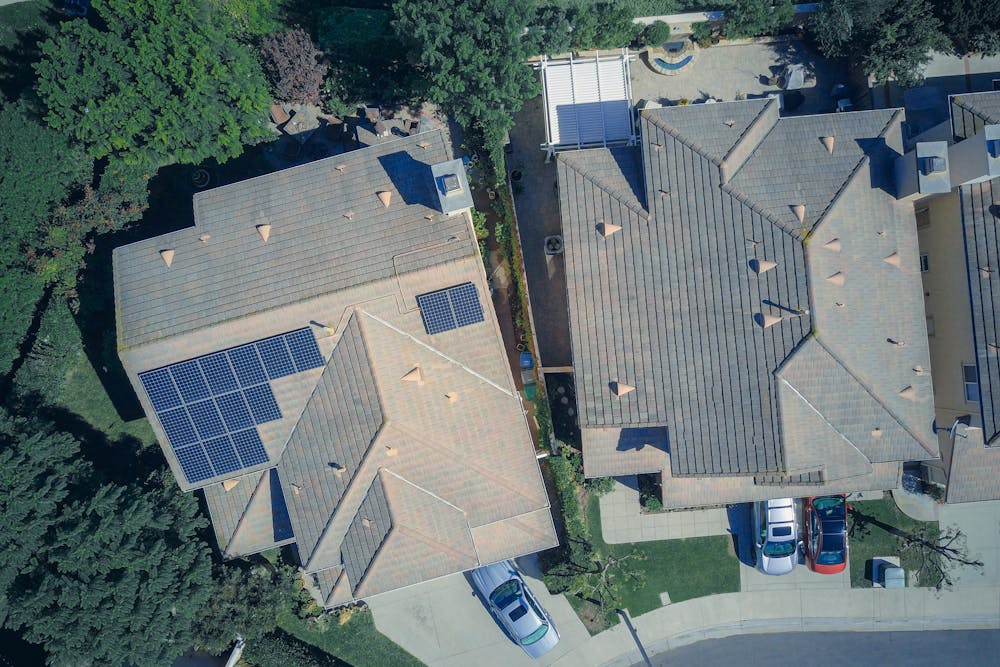As the world increasingly turns to renewable energy sources, heat pumps have become a popular choice for heating and cooling homes. However, many homeowners are faced with the dilemma of whether to install a heat pump without incorporating photovoltaics. This article will explore the feasibility and practicality of such a decision, discuss how many panels are needed for optimal operation of a heat pump, and provide a cost analysis for combining a heat pump installation with photovoltaic systems. Through a detailed examination, we aim to offer valuable insights into maximizing the efficiency of heat pumps and making informed decisions about renewable energy investments.
The Benefits and Drawbacks of Installing a Heat Pump Without Photovoltaics
Installing a heat pump without photovoltaics can present a mixed bag of benefits and drawbacks, which must be carefully considered by any homeowner looking to make an informed decision.
Benefits:
- Lower Initial Costs: One of the most significant advantages of installing a heat pump without photovoltaics is the reduced upfront cost. Without the need to invest in solar panels, homeowners can save a substantial amount on the initial installation. This makes heat pumps more accessible to those who may not have the capital to invest in a full renewable energy system.
- Simplified Installation: Without the addition of solar panels, the installation process for a heat pump becomes simpler and quicker. This can result in lower labor costs and less disruption to the home during the setup phase.
- Energy Efficiency: Heat pumps are known for their high energy efficiency. Even without solar panels, they can still significantly reduce energy consumption compared to traditional heating and cooling systems. This efficiency can lead to lower energy bills over time, providing long-term financial benefits.
Drawbacks:
- Reliance on Grid Electricity: Without photovoltaic panels, a heat pump will rely entirely on grid electricity to operate. This can lead to higher energy costs, especially in areas where electricity prices are high. Furthermore, this reliance means that the system is not taking full advantage of renewable energy, which can be a missed opportunity for both cost savings and environmental benefits.
- Missed Environmental Benefits: Photovoltaic panels allow homeowners to harness solar energy, reducing their carbon footprint. By not incorporating photovoltaics, the environmental benefits of using a heat pump are somewhat diminished, as the electricity used may come from non-renewable sources.
- Potential for Higher Long-Term Costs: While the initial costs are lower without photovoltaics, the long-term savings might not be as substantial. Over time, the cost of grid electricity can add up, potentially offsetting the savings gained from the heat pump’s efficiency.
Determining the Number of Panels Needed for a Heat Pump
Calculating the number of photovoltaic panels required to support a heat pump involves several key factors. Understanding these can help homeowners make informed decisions about their renewable energy investments.
Energy Consumption of the Heat Pump: The first step in determining the number of panels needed is to understand the energy consumption of the heat pump. Heat pumps are rated by their seasonal coefficient of performance (SCOP), which indicates how efficiently they convert electricity into heating or cooling over a season. A typical heat pump might have a SCOP of 3, meaning it produces 3 units of heat for every unit of electricity consumed.
Solar Panel Output: Next, the average output of a solar panel must be considered. This varies depending on the panel’s efficiency and the geographic location. For instance, a typical solar panel might produce around 250-400 watts of power under standard test conditions. However, this output can be influenced by factors such as shading, orientation, and the amount of sunlight received in a specific location.
Annual Energy Needs: To estimate the total number of panels, homeowners need to calculate their annual energy needs. This involves considering the heat pump’s operational hours, which can vary seasonally. For example, in colder climates, the heat pump will run more frequently during winter, increasing its energy consumption.
Example Calculation:
- Annual Energy Consumption: Assume a heat pump consumes 3,000 kWh annually.
- Solar Panel Output: If a panel produces 300 watts and receives about 4 hours of peak sunlight daily, it generates roughly 1.2 kWh per day or 438 kWh annually.
- Number of Panels Needed: Divide the annual energy consumption of the heat pump by the annual output of a single panel. In this example, 3,000 kWh / 438 kWh per panel ≈ 7 panels.
This simplified calculation illustrates that approximately 7 panels would be needed to cover the annual energy consumption of a heat pump, though the exact number may vary based on specific circumstances.
Cost Analysis: Heat Pump with Installation and Photovoltaics
Understanding the costs associated with installing a heat pump and combining it with photovoltaic panels is crucial for any homeowner considering this investment.
Initial Costs:
- Heat Pump Installation: The cost of a heat pump system can vary significantly based on the type and capacity of the unit. On average, homeowners can expect to pay between $3,000 to $10,000 for a heat pump system, including installation.
- Photovoltaic Panels: The cost of solar panels is typically measured per watt of capacity. As of 2024, the average cost of solar panels is around $2.50 to $3.50 per watt. For a standard 6 kW system, this translates to an installation cost of $15,000 to $21,000.
Total Combined Cost: When combining both systems, the total upfront cost can range from $18,000 to $31,000. This includes both the heat pump and the solar panel installation.
Operational Savings:
- Energy Savings: By using solar energy to power the heat pump, homeowners can significantly reduce their electricity bills. The exact savings will depend on local electricity rates and the efficiency of the solar panels.
- Incentives and Rebates: Many regions offer financial incentives, tax credits, and rebates for installing renewable energy systems. These can offset a portion of the initial costs, making the investment more attractive.
Long-Term Financial Benefits:
- Return on Investment (ROI): The ROI for a combined heat pump and solar panel system can be substantial over the long term. Energy savings, coupled with the potential increase in property value, can make this investment financially rewarding.
- Maintenance Costs: Both heat pumps and solar panels require minimal maintenance. Regular servicing and occasional repairs are necessary, but these costs are generally low compared to traditional heating and cooling systems.
Maximizing Efficiency: Heat Pumps and Photovoltaic Integration
Integrating heat pumps with photovoltaic panels can significantly enhance energy efficiency and sustainability. Here are several strategies to maximize the benefits of this integration:
- Optimal System Sizing: Ensuring that both the heat pump and the solar panel system are appropriately sized for the home’s energy needs is crucial. This involves a detailed energy audit and professional consultation to determine the optimal capacity for both systems.
- Energy Storage Solutions: Incorporating energy storage solutions, such as batteries, can further enhance the efficiency of the system. Batteries allow homeowners to store excess solar energy generated during the day and use it to power the heat pump during the night or during periods of low sunlight.
- Smart Energy Management: Utilizing smart thermostats and energy management systems can help optimize the operation of the heat pump and solar panels. These systems can adjust the heat pump’s operation based on real-time energy production from the solar panels, maximizing efficiency and minimizing energy waste.
- Regular Maintenance: Regular maintenance of both the heat pump and solar panels is essential to ensure optimal performance. This includes cleaning the solar panels to maintain their efficiency and servicing the heat pump to ensure it operates at peak performance.
Integrating a heat pump with photovoltaic panels is a compelling solution for those looking to enhance their home’s energy efficiency and reduce their environmental impact. By carefully considering the costs, benefits, and strategies for maximizing efficiency, homeowners can make informed decisions that benefit both their wallets and the planet.
More information on the website: https://7sun.eu/de/








